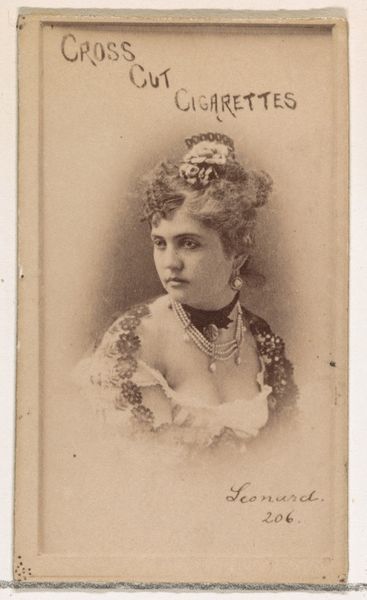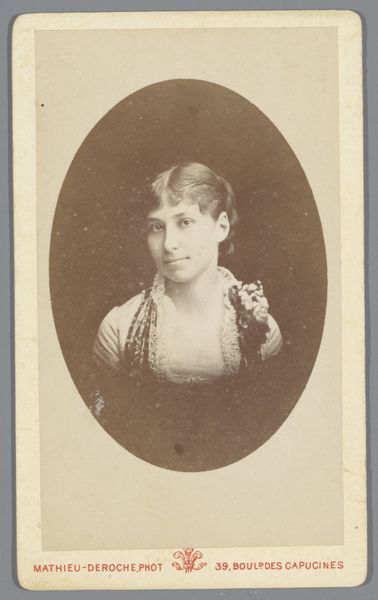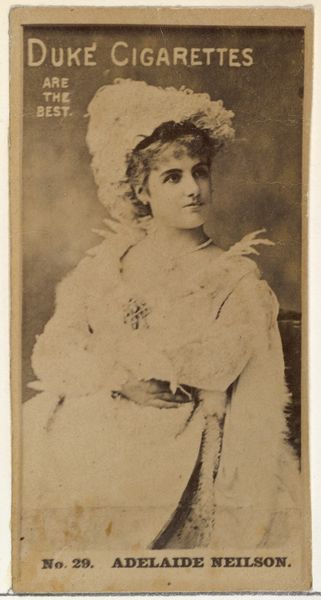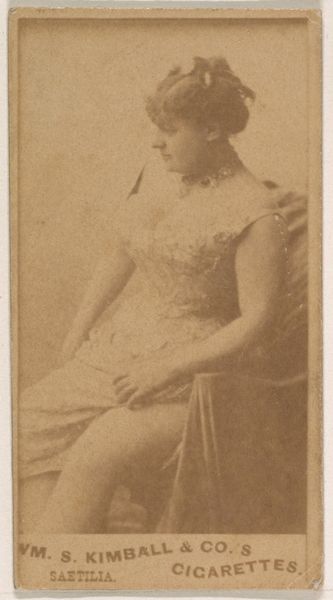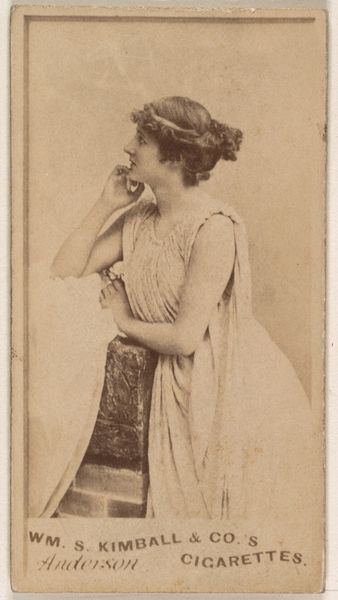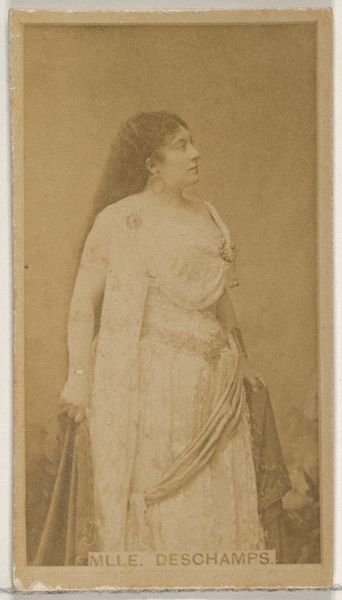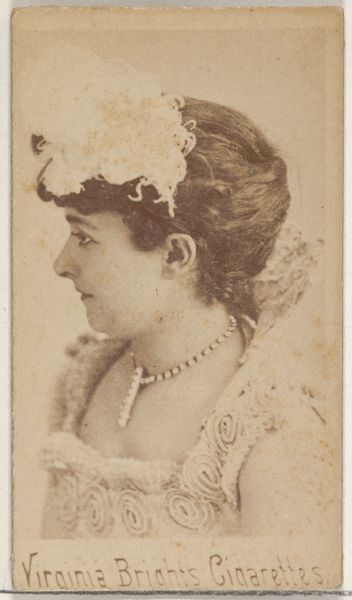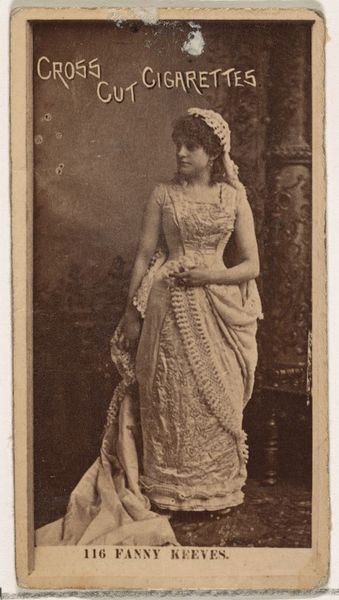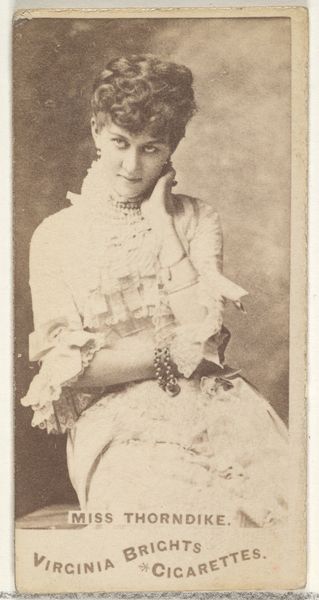![Portret van Charlotte ('Loty') [van Heeckeren van Molecate-]van Braam by De Lavieter & Co.](/_next/image?url=https%3A%2F%2Fd2w8kbdekdi1gv.cloudfront.net%2FeyJidWNrZXQiOiAiYXJ0ZXJhLWltYWdlcy1idWNrZXQiLCAia2V5IjogImFydHdvcmtzLzhhMjVlMzY2LWE5ZTQtNGQxNS1hN2Y4LTJkMmRmYzVlNmJlZi84YTI1ZTM2Ni1hOWU0LTRkMTUtYTdmOC0yZDJkZmM1ZTZiZWZfZnVsbC5qcGciLCAiZWRpdHMiOiB7InJlc2l6ZSI6IHsid2lkdGgiOiAxOTIwLCAiaGVpZ2h0IjogMTkyMCwgImZpdCI6ICJpbnNpZGUifX19&w=3840&q=75)
Portret van Charlotte ('Loty') [van Heeckeren van Molecate-]van Braam 1875 - 1890
0:00
0:00
photography, albumen-print
#
portrait
#
photography
#
albumen-print
#
realism
Dimensions: height 85 mm, width 55 mm, height 104 mm, width 63 mm
Copyright: Rijks Museum: Open Domain
Editor: This is "Portret van Charlotte ('Loty') [van Heeckeren van Molecate-]van Braam," a photograph, specifically an albumen print, dating from 1875 to 1890 by De Lavieter & Co. It's striking how this seemingly simple portrait evokes such a strong sense of… stillness. What can you tell me about this piece? Curator: The stillness you observe is deeply intertwined with the photograph's materiality and production. Albumen prints like this were the dominant form of photographic portraiture for decades. Think about the labor involved: the preparation of the glass negative, coating the paper with albumen from egg whites – an industrial process in itself! – printing, and finally mounting the image. Editor: So, the very act of making the portrait shaped its aesthetic? Curator: Precisely. This wasn't about capturing a fleeting moment in a highly spontaneous way as we see today. The subject, Loty van Braam, would have had to remain still for a relatively long exposure. The formal pose, the carefully arranged clothing and accessories – all speak to the constraints and possibilities of the medium. Consider the role photography played in solidifying bourgeois identity. Who had access to this technology? Who was being represented, and how? The materiality reflects societal values and means of production. Editor: That makes me see it in a completely different way! The "stillness" becomes almost… performative. Curator: Yes! The image’s material conditions and mode of production influence how it reflects the world and in turn how its consumers regarded it and themselves. It speaks volumes about social standing, labor, and technology in the late 19th century. Editor: I hadn't thought about the albumen printing process at all before, or about the broader historical forces. It makes the image far more complex and revealing. Thanks! Curator: My pleasure! Looking at the process helps us understand the broader cultural narratives.
Comments
No comments
Be the first to comment and join the conversation on the ultimate creative platform.

